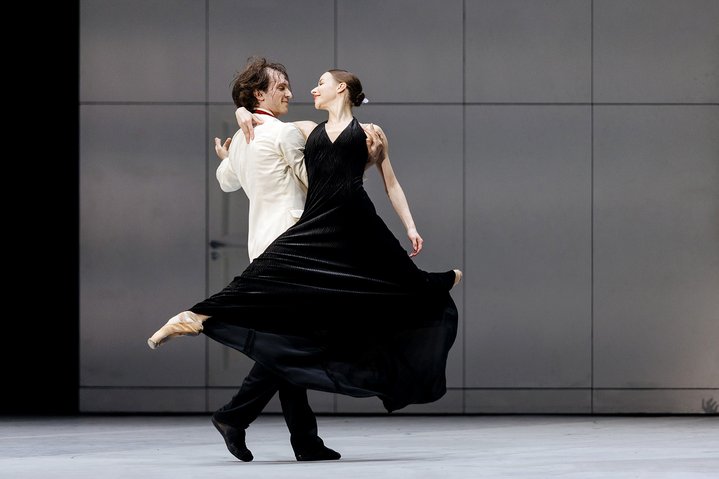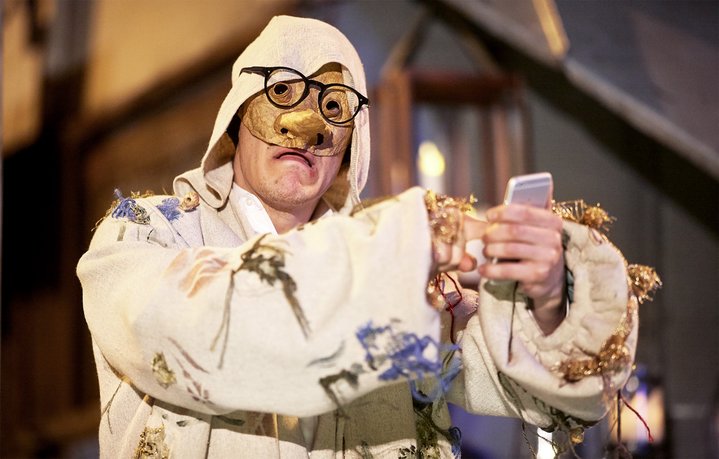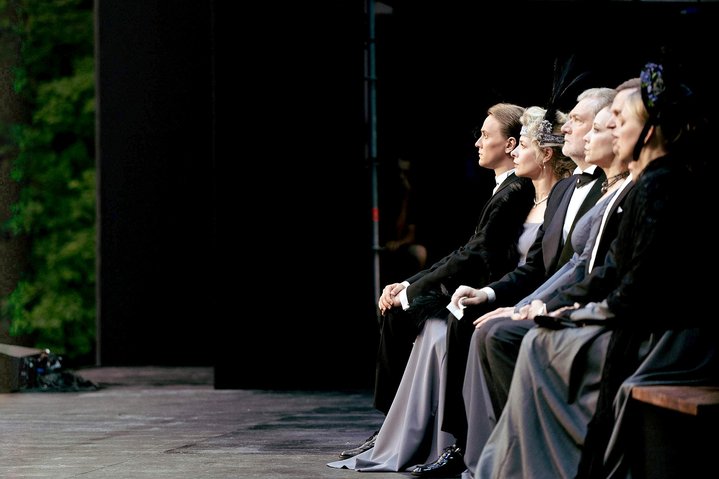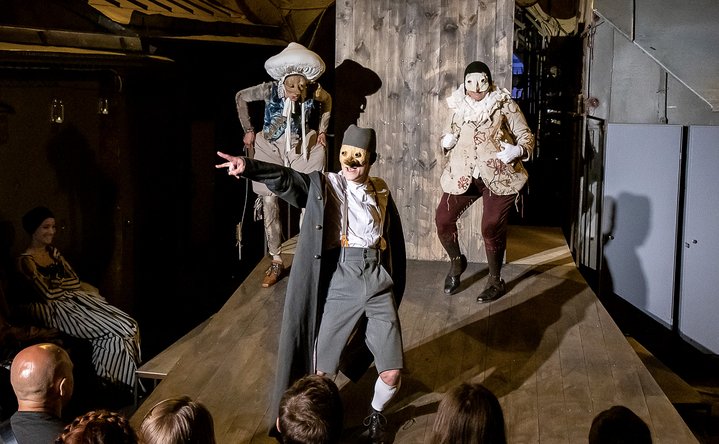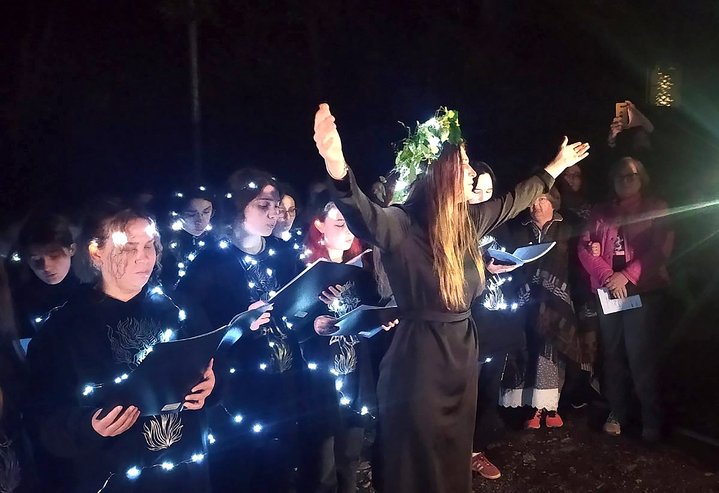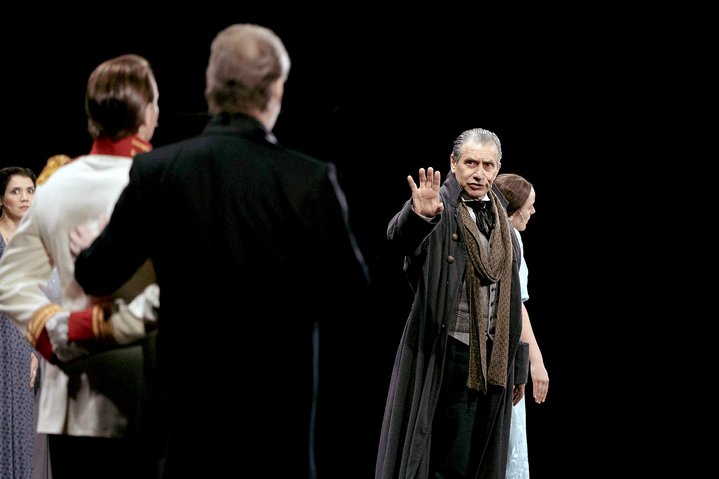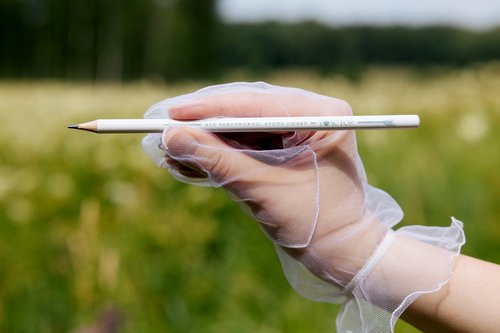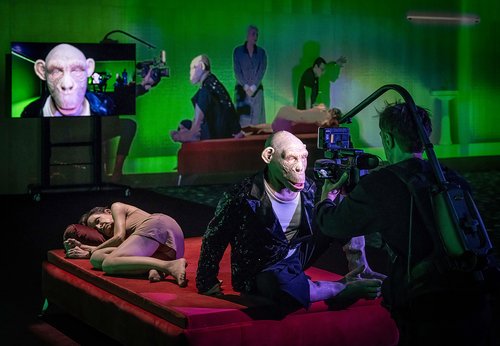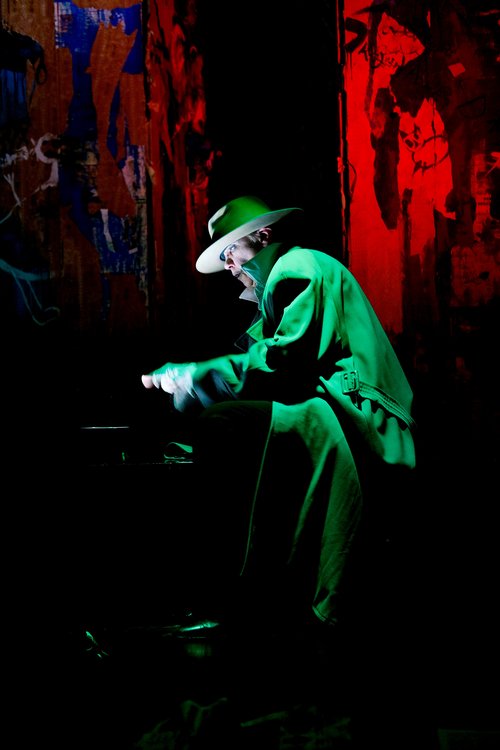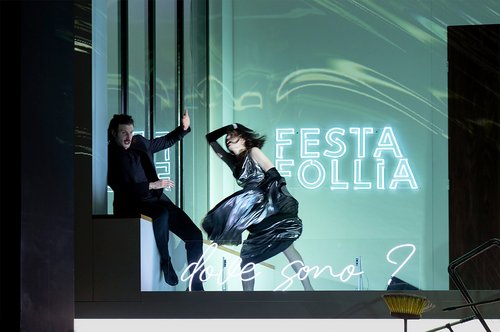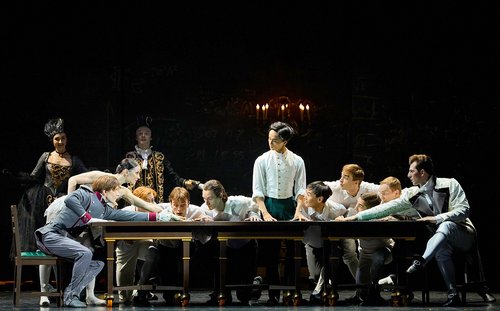Russian Theatre Goes Outside

Savelius’ Days. Photo by Sergey Petrov. Courtesy of Russian Academic Youth Theatre (RAMT)
Open air theatre is an indispensable part of the short Russian summer and loyal fans prepare to endure any number of freak meteorological events for the sake of a special experience.
In 2022 the Vakhtangov Theatre’s production of ‘War and Peace’ opened the annual Tolstoy Festival at Yasnaya Polyana, Lev Tolstoy’s Museum estate in central Russia, where his epic novel was written. Staged by Lithuanian director Rimas Tuminas (1952-2024), who led the theatre from 2007 to 2022, the production premiered on the eve of tragic events that were to change the future of Europe, and the production turned out to be the main event of the 2021-2022 Moscow theatre season. At the heart of both the great Russian novel and the Tuminas production lies the fate of the individual in an era of change.
At Yasnaya Polyana, the play was performed in the open air on an exact replica of the original Vakhtangov Theatre stage. A grandstand for a thousand seats was built on the edge of the forest.
As the performance got underway a strong wind and heavy rain became part of the spectacle, then a thunderstorm broke out at the very moment the war begins in ‘War and Peace’. It rained for over an hour, a downpour against which neither an umbrella nor a raincoat gave any shelter or protection. Not one single person in the audience got up and left. Those who had not managed to buy a ticket and who had somehow found standing places, did not move either. By the end of the first act, of this five-hour production, the rain was subsiding, and the sky had darkened, and in the bright footlights you could see flitting moths and the dark silhouettes of trees.
It was an ambitious undertaking, but in 2023, the festival organisers decided to transfer an even larger-scale production, John Neumeier's ballet ‘Anna Karenina’, to an open-air venue. This time, the choice was a prefabricated replica of the Bolshoi Theatre. The same stage and orchestra pit as in the historic building and a vast area backstage complete with dressing rooms and a canteen was constructed in a field. The panoramic view afforded by the surrounding forests became one of the main elements of the production, which features scenes that take place in a Russian manor house, similar to Yasnaya Polyana.
In Neumeier's ballet, ‘Anna Karenina’ takes place in the present day. Karenin, a major politician, is running for elections, Vronsky plays lacrosse and Anna does not throw herself under a train but falls underground through a trapdoor symbolising the underworld. Levin goes out into the field not with a scythe but in a small tractor. Only the fields and the sky above them remain the same and this historical part of the set has added another temporal dimension to the performance. A small model train appears on stage several times, a toy yet a harbinger of imminent trouble.
Trains and railways feature throughout Lev Tolstoy's works as well as in his own life, according to his contemporary biographer Pavel Basinsky, who writes in ‘The True Story of Anna Karenina’ that it may even have been a railway that killed the great writer. Dr Makovetsky, who accompanied Tolstoy when he fled from Yasnaya Polyana in the autumn of 1910, recalled that the passengers in the third-class carriage they shared on their journey to Kozelsk, were chain smoking. Tolstoy began to choke and went out to the open platform at the rear of the carriage to get some fresh air. People were smoking there as well so he continued walking to the front, which was buffeted by a strong wind. Those fifteen minutes he spent in the wind that day proved fatal. Ten days later he died of pneumonia at Astapovo railway station, the intersection of the Kozlov–Volovo and Moscow–Yelets lines. His body was then brought back by funeral train to Kozlova Zaseka, the closest railway station to his estate.
At the Tolstoy 2023 Festival, this train station, which was renovated and turned into a museum in the early 2000s, was the setting for Albina Vakhitova's (b. 1995) performance ‘Mara’. During the play, the performers moved along the railway tracks while the audience watched from the platform. The clatter of the wheels of a train passing through the station featured in the musical score composed by Dmitry Vlasik (b. 1981), a populariser of contemporary music.
In Russia, museums are becoming increasingly popular as venues in which to stage theatrical performances outside. Last summer, Nizhny Novgorod’s Shchelokovsky Khutor Architectural and Ethnographic Museum hosted the premiere of the landscape opera ‘Pokrova’, which explored new ways for theatres and museums to interact. Nizhny Novgorod poet Artem Feigelman (b. 1986) came up with the idea for the production: a journey through the grounds of the museum together with a choir and musicians, from one Pokrov (the Feast of the Protection of the Mother of God) church to another.
Originally the opera had a basic narrative which tells the story of a girl who goes looking for her father, after her house has burnt down, wandering from one place to the next. Gradually, as the libretto began to take shape, they included texts from different eras and from several different sources ranging from spiritual poems written by Old Believers, Soviet and pre-revolutionary folklore, to works by contemporary Nizhny Novgorod poets. Each house the girl visits in this opera-journey has its own story, one is whispered, another is sung in a powerful choral voice. Even a small brook gets to sing when a pagan goddess flies up out of it only to melt in the dark. Curator Ksenia Arefieva invited eight female composers to write the music for each of the eight scenes. Unfortunately, at the present time of writing the future of ‘Pokrova’ is unclear due to a lack of funds although there is a video version which was recently shown at the Arsenal in Nizhny Novgorod, a branch of the Moscow State Pushkin Museum of Fine Arts.
Moscow theatres are also embracing the open-air format. The Russian Academic Youth Theatre (RAMT) has opened an additional stage in its small courtyard nestled inside a historical building ensemble, with the doors of the backstage wing facing onto it. Five years ago, when director Oleg Dolin (b. 1981) first launched his production of ‘Zobeida’ based on Carlo Gozzi's fairy-tale play in this tiny space the setting had a special magic that resonated with audiences and still brings them back to the old theatre, all they bring is a rug to spread out on the ground to share in the experience of a magic carpet ride in this special setting.
The first production in the courtyard was followed by ‘Savelius’ Days’, based on a book by Muscovite actor and writer Grigory Sluzhitel (b. 1983). To introduce the audience to the philosophy of the street cat and his walks through favoured haunts in Moscow like the high bank of the Yauza River near Taganka or the Bauman Garden, director Marina Brusnikina (b. 1961) brought the action beyond the limits of the courtyard. Together with the characters in the play, the audience wanders through the theatre, into the large foyer, the grand staircase and mezzanine.
Outside in the courtyard this season is ‘Heart of the West’, a play based on stories by O. Henry stylised as a cabaret featuring three actors backed by a musical combo of drums, saxophone and electric guitar, and the audience sits at round tables. Drainpipes, rusty roofs, and a dim patch of the Moscow sky, which can turn to rain at any moment, slot naturally into the performance, as do the honks of the cars that pass outside the gates separating the courtyard from the street. The theatre courtyard with a host of new, innovative productions, has gradually become one of the favourite performance venues of this much-loved hundred year old theatre.






